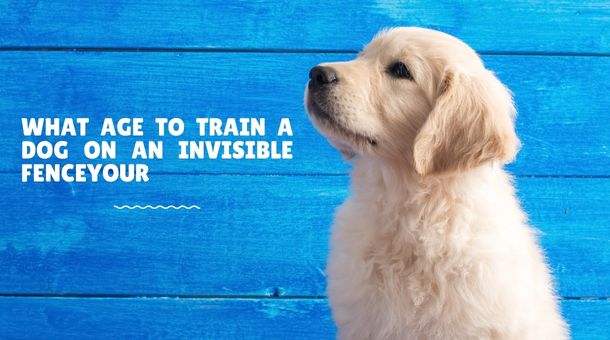The appropriate age to train a dog on an invisible fence may vary depending on the individual dog and the specific invisible fence system used.
Generally, dogs can start training on an invisible fence at around six months or older, when they are physically and mentally mature enough to learn and understand the training process. According to your question, this article will help you at what age to train a dog on an invisible fence.
What is an invisible fence, and how does it work?
An invisible fence is an electronic containment system designed to keep dogs or other animals within a specific area without using traditional physical barriers such as fences or walls.
It combines underground wires or radio signals and a specialized collar that the animal wears.
The invisible fence system typically consists of three main components:
- A transmitter is placed somewhere in the home or yard and emits a radio signal to communicate with the animal’s collar.
- An underground boundary wire or radio signal is buried around the perimeter of the area that the animal is meant to stay within.
- A specialized collar that the animal wears contains a receiver that picks up the radio signal from the transmitter and emits an audible warning tone or a mild electric shock to the animal if it gets too close to the boundary wire or signal.
How do I train my dog on an invisible fence? In steps
Training a dog on an invisible fence involves several steps to ensure that the dog learns to associate the warning tone or electric shock with the boundary and understands how to stay within the designated area.
Here are some general steps to follow when training your dog on an invisible fence:
Step 1: Introduce the collar
Allow your dog to get familiar with the collar it will wear during training. Put it on for short periods and gradually increase the length of time they wear it.
Step 2: Mark the boundary
Use flags to mark the boundary of the invisible fence. This will help your dog visually recognize the boundaries.
Step 3: Start training
Keep your dog on a leash and walk them along the fence’s boundary. Allow them to hear the warning tone and experience the mild electric shock by getting too close to the boundary. Reward them with praise and treats when they move away from the boundary.
Step 4: Practice
Practice walking your dog along the boundary daily until they understand and avoid crossing the warning tone.
Step 5: Off-leash training
Once your dog is comfortable with the collar and understands the boundary, let them off the leash within the designated area. Supervise your dog closely during this phase of training.
Step 6: Gradual increase in freedom
As your dog becomes more comfortable with the invisible fence, gradually increase their freedom within the designated area. Keep supervising them to ensure that they stay within the boundary.
Factors you need to keep in mind before training your dog:
Before training your dog, there are several factors that you need to keep in mind to ensure that the training is safe, effective, and enjoyable for both you and your dog. Here are some important factors to consider:
- Age
- breed
- Health
- Temperament needs
- Environment
- Rewards
- positive reinforcement
- Consistency
- patience
Benefits of the invisible fence:
There are several benefits of using an invisible fence to contain your dog, including:
Safety:
An invisible fence can provide a safe and effective way to keep your dog within a designated area without physical barriers. This can help protect your dog from potential hazards such as traffic or other animals.
Cost-effective:
Invisible fences can be a cost-effective alternative, especially for larger properties or areas where traditional fencing is not practical or desirable.
Aesthetically pleasing:
Invisible fences are invisible, which means they won’t obstruct views or detract from the appearance of your property.
Freedom to run and play:
An invisible fence can allow your dog to run and play within a designated area while keeping them contained and safe.
Easy to maintain:
Invisible fences require minimal maintenance, unlike traditional fences that may need repairs or replacement over time.
Flexibility:
Invisible fences can be easily adjusted or expanded to meet your changing needs, such as if you move to a new property or add a new pet to your household.
conclusion
The age at which you can start training your dog on an invisible fence can vary depending on your dog’s breed, size, and temperament. Most experts recommend waiting until your dog is at least 6 months old and has completed basic obedience training before starting invisible fence training.
It’s important to remember that invisible fence training is a gradual process that requires patience, consistency, and positive reinforcement. Additionally, before starting invisible fence training, ensuring your dog is healthy and free from any underlying health conditions is important.
Suppose you have any concerns or questions about when to start training your dog on an invisible fence. In that case, it’s always a good idea to consult a professional dog trainer or veterinarian for guidance and support.




